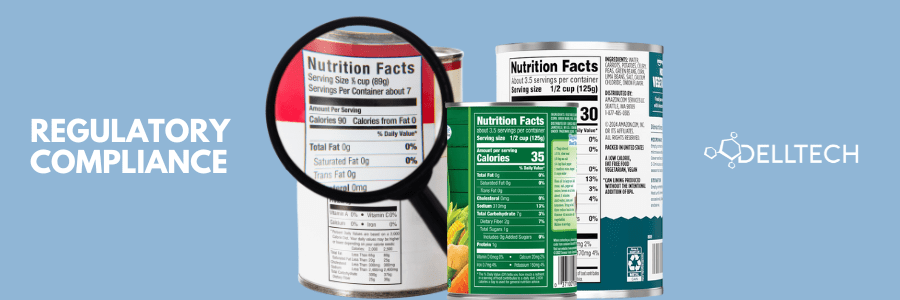The Cosmetic Ingredient Hotlist is an administrative tool used by Health Canada to communicate to manufacturers and other stakeholders that certain substances, when present in a cosmetic, may contravene the general prohibition found in section 16 of the Food and Drugs Act or a provision of the Cosmetic Regulations. This list is not exhaustive, and those selling cosmetics must not wait for a regulatory or Hotlist update to comply with the general prohibition. The sale of a cosmetic should stop as soon as it is known that the cosmetics may cause injury.
The Hotlist is updated periodically based on scientific evidence, international standards, and stakeholder input. While it is not a formal consultation process, Health Canada invites stakeholders to provide safety information or other considerations about the proposed substances before finalizing updates.
To read about previous changes to the Hotlist check out Dell Tech’s page on News and Events and use the search bar to navigate.
Recent Updates to the Hotlist
In February 2025, Health Canada updated the Hotlist by adding new substances and amending existing entries with the goal of enhancing consumer safety.
New Additions:
- Retinal (Retinaldehyde)
- Thioglycolic Acid Esters
Amendments to Existing Entries:
- Mixed Cresols and Derivatives
- Peroxide and Peroxide-Generating Compounds
- Benzoyl Peroxide
- Retinol and Its Esters
Upcoming Changes to the Health Canada Hotlist
In May 2025, Health Canada posted a Notice outlining new proposed updates to the Hotlist. The following substances are being considered for addition or revision to both the prohibited and restricted sections of the Hotlist based on the information currently available on the substances and the level of risk to human health through exposure.
Proposed additions to the Hotlist:
Restrictions:
- Basic Violet 4
- Basic Blue 7
- Polyaminopropyl Biguanide
Proposed revisions to the Hotlist to existing substances
Prohibitions:
- Symphytum spp., with the exception of Symphytum officinale
- Brucine (may also include expansion of the entry for Brucine and its salts)
- Imperatorin – is being considered for removal from the Hotlist and subject under the entry for Furocoumarins
Restrictions:
- Furocoumarins, except for naturally occurring in plant extracts
Additional revisions:
There may also be updates to exiting entries to include new CAS numbers, synonyms or ingredient names.
Ingredients under Evaluation by the Chemicals Management Plan (CMP)
- Acyclic, Monocyclic, and Bicyclic Monoterpenes Group
- Alcohols Group
- Boric acid, its salts and its precursors
- Fourteen Terpene and Terpenoid Substances Group
- Gas Oils and Kerosenes with Uses in Products Available to Consumers Group
- Low Boiling Point Naphthas Group
- Monocyclic and Bicyclic Sesquiterpenes Group
- Parabens Group
- Phenylpropanoids and Aldehydes Group
- Salicylates Group
- Tricyclic Sesquiterpenes and Triterpenoids Group
Before a change is made to the Hotlist, Health Canada will issue a Notice, followed by a Public Consultation, Review/Assessment of comments, and finally implement the Addition to the list. If Health Canada receives information on a substance that indicates serious risk to human health, the consultation and review periods will be bypassed and immediate action will be take to add the substance to the Hotlist.
General Takeaways
Health Canada’s commitment to updating the Cosmetic Ingredient Hotlist reflects its dedication to consumer safety and regulatory excellence. They do this by updating and maintaining the Hotlist as information comes to light on ingredients used in cosmetic products. It is important to stay informed about these changes to ensure products on the market remain complaint under the Canaian Cosmetic Regulations. You can check the current Hotlist at any time by using this link.
Please note that this Notice is not a formal consultation process, so comments are currently not being received for the substances listed above. Dell Tech will continue to post blogs on proposed and finalized renditions of the Hotlist. Contact us for more information and ensure your cosmetics meet all the necessary regulatory requirements.
DELL TECH HAS PROVIDED PROFESSIONAL, CONFIDENTIAL CONSULTING SERVICES TO THE SPECIALTY CHEMICAL INDUSTRY IN CANADA, THE USA, EUROPE AND ASIA FOR THE LAST 40 YEARS.
[INSERT_ELEMENTOR id=5705]





